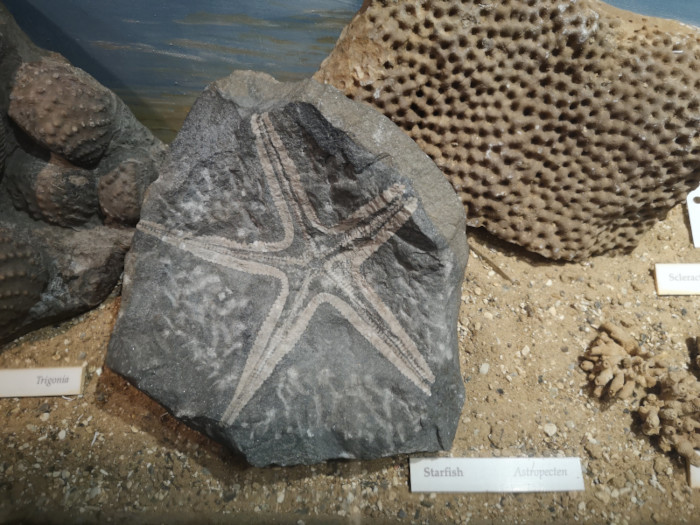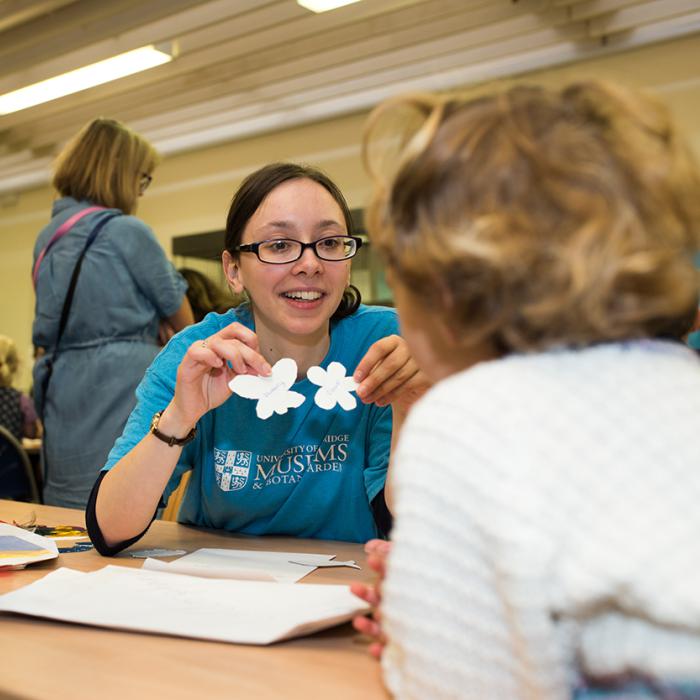Make your own Anglerfish mask and discover how this crafty fish tempts in its prey...
Salt dough is easy to make and can be used to make all sorts of models - including starfish. This activity will show you how.
Fossil Jurassic star fish from the Sedgwick Museum

Museum Trails
If you are visiting the Museum with young children, why not download our Rainbow of Colour trail to print out and bring with you? It will keep the children entertained as they look for all the colourful specimens in the Museum, and they can even use it in the garden or any outdoor space too.
- rainbow_of_colour_trail_.pdf (1.35 MB)
All bookings are subject to change in accordance with government guidance.
There is no charge for our standard school sessions, but donations are welcomed to support the Museum learning programme (recommended donation of £3 per child).
If you are a UK based school or college (teaching under 18 year olds) wishing to visit the Museum with your class, please use the booking form to make a request.
All other groups should use our group booking form (including international schools) or language school booking form.
School Visits
On Wednesdays, the Polar Museum although closed to the general public, will be open for pre-booked school group visits (one morning/one afternoon). Priority will be given to school groups who are visiting as part of a polar project. This arrangement will last until the end of 2021. You will lead your group around the museum accompanied by a member of our education team. We are happy to lend you clipboards and pencils. There is a suggested donation of £1 per child for a class group visit to the Polar Museum.
Home school challenges
Artist Kaitlin Ferguson shows you how to make your own ichthyosaur using one of Mary Anning's fossils in the Sedgwick Museum’s collection as inspiration.
There are two different makes that you can try depending on how much time you have.
Make one: Ichthyosaur template
Make two: salt, flour and water to make salt dough (or plasticine or playdough)
To make your zine you will need:
Asteriornis maastrichtensis, affectionately known as the Wonderchicken, is among the most exciting bird fossils ever found. It has one of the best-preserved fossil bird skulls in the world, and gives us important insights into the evolutionary origins of modern birds.
Gravel Hunters is an educational resource that aims to encourage budding explorers of all ages to discover fossils for themselves on their doorsteps. From gardens to car parks and driveways, fossils can be unearthed in flint gravel from all sorts of environments - all you need to do is collect them.
This resource gives examples of some of the most common fossils found in flint gravel.

